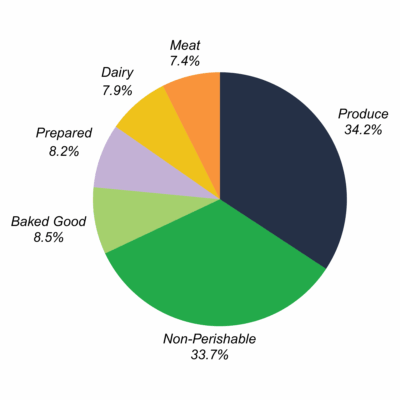Preventing Systemic Food Waste
Our food rescue operations take food from places where it would otherwise be wasted and puts it in the hands of people that need it. These efforts confront both food insecurity and climate change at the same time by preventing landfill emissions. In 2024, Second Helpings saved 3,986,866 lbs of food from being thrown away. This prevented 6,049 Tons of CO2 Equivalent from being released into the atmosphere. That has the same impact as removing 1,411 gasoline-powered cars from the road for a year (Source: EPA, Greenhouse Gas Equivalencies Calculator, 2024).
In Indiana, 1 in 7 people face food insecurity at the same time that an average of a pound of food is wasted per a person each day. There is enough food to feed everyone, but up to 40% of food produced is sent to landfills instead. In order to ensure food access and reduce emissions, this percentage needs to go down (Source: Feeding America, Food Insecurity, 2023).
This is where Second Helpings is able to make a difference. By preparing and redistributing food that would otherwise be wasted, we are able to reduce both food insecurity and food waste. We also encourage other organizations to do the same through the Rescue Kitchen Network, a capacity-building program in partnership with La Soupe.
Our emission calculations take food categories into account which allows for more accurate estimations since environmental impacts vary significantly by category. For example, for the same weight of food, beef has 150 times more emissions associated with its supply chain than apples. The emissions from beef takes into account factors like the farm equipment, feed production, processing, packaging, and transportation that are wasted any time that it is thrown out (Source: Our World In Data, 2020).
While we typically rescue less meat than any other food category, it is notable that the environmental impact is disproportionately high. By taking factors like these into account, we are better able to estimate our positive environmental impact and identify prioritization areas going into the future.

